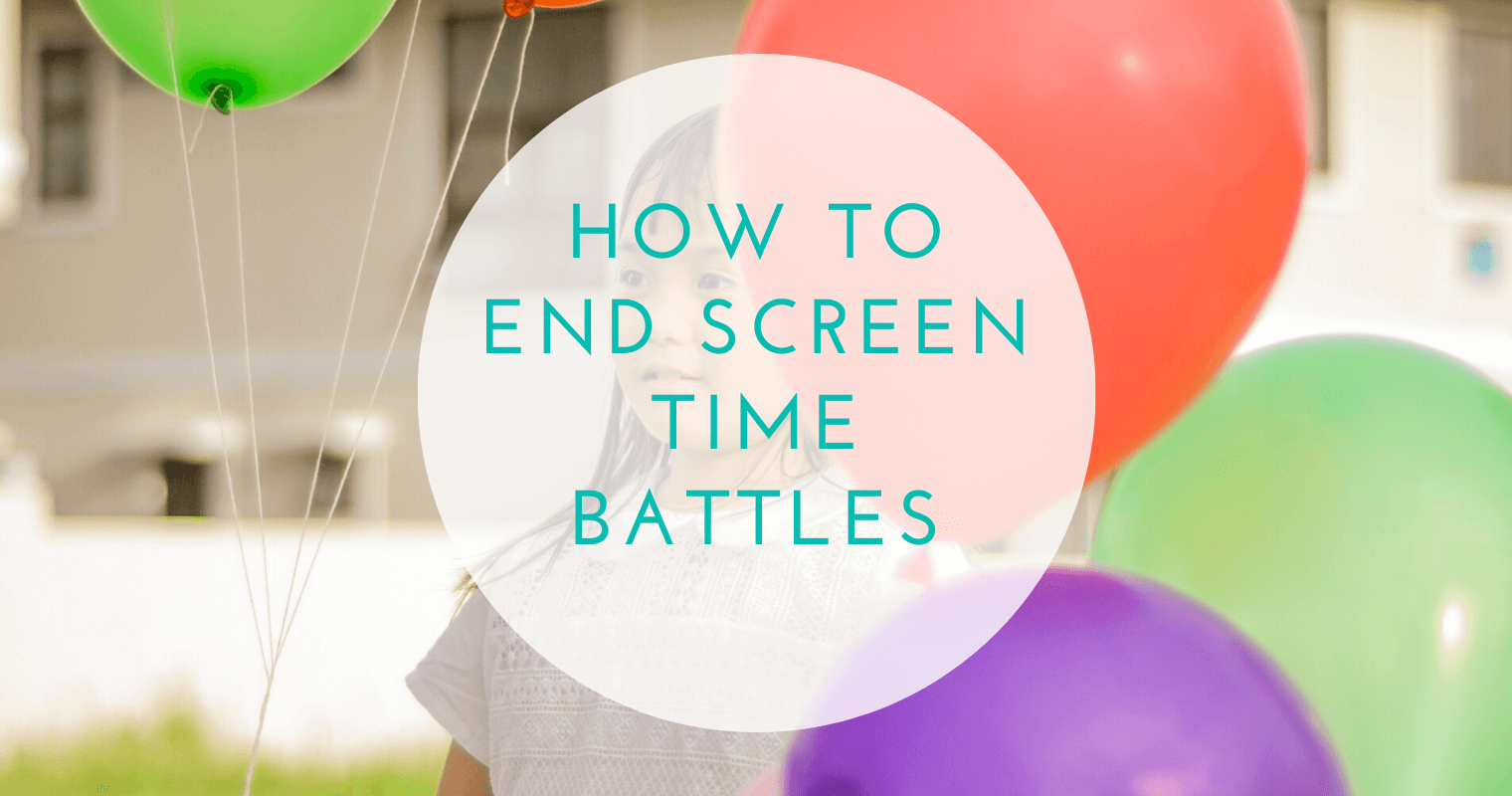This post may contain affiliate links, meaning at no additional cost to you I may earn a small commission when you click a product or company link. As an Amazon Associate I earn from qualifying purchases.
So you’ve weighed the benefits and risks of screen time and are making the effort to create screen time rules that reduce your kid’s screen time. And now you’ve inevitably come to the point where it’s time to tell your child to turn off the screen.
Do your kids melt down when it comes time to quit an activity? My son is 3, which means I’m extremely familiar with the agony of transitions for children. There’s yelling and crying and just overall misery for everyone involved.
I find one of the most helpful ways to prepare my child to relinquish the device at the end of screen time is to tell him before it even starts what my expectation is.
When your child begins something with the understanding that he will have to give it up, the transition is easier for him and feels less abrupt.
I used to use timed warnings–“five more minutes of play time and then we’re leaving!” Sometimes that worked, but many times the transition was still met with much wailing and gnashing of teeth.
Then I read an article about a more effective transition strategy for children. I had actually used a similar strategy from time to time in the past, but didn’t realize I was doing it.
After I read the article, I became more intentional about putting it into action. It’s been working really well for us.
This has become my approach for many of his favorite activities. For example, if I’m reading to him, I’ll let him know that this is going to be the last story I read before I start it.
Here’s why I try to avoid time-based warnings now, what we’re doing instead, and some examples of what it looks like in real life.

Table of Contents
Why five-minute warnings don’t work
Children have a very incomplete sense of time. They develop an understanding of time from a young age, but they can only accurately judge the passing of time if they’re paying attention to it.
And the way they perceive time is very much context based. This article gives an interesting explanation of how children perceive time and how that perception changes as they get older.
When a child is distracted by an activity they enjoy, time becomes meaningless.
So when you tell them only five more minutes, it probably feels more like 30 seconds.
Timers can help, especially if there’s a visual or auditory cue for the passing of time. We use timers sometimes for certain activities, but the concept is still a bit nebulous for a child.
Why “counting” transitions work better
While children may have a poor understanding of time, their understanding of counting is much more concrete.
Here’s how counting transitions work. Instead of telling your child, “You have five more minutes to play,” give him a specific activity he can do a specific number of times.
For example, “I will give you 7 more pushes in the swing, and then we need to go home for lunch.”
That’s a very concrete activity with an unmistakable ending point. Your child can count by himself or you can count together. Either way, you both know when the activity is over.
How many times?
The number you choose will vary based on your child’s age and what the activity is. For my 3 year old, I usually don’t go any higher than 5.
It feels like a lot to your child, so he won’t feel cheated. But it’s not so much that it should take an hour to complete.
I try to make it an odd number, since odd numbers are somehow more appealing to our human psyche. Then I base the number on how quickly I think it will take him to complete it and how quickly we need to move on.
What if my child doesn’t use up his “times”?
So far this has happened to us only once. I told my son he could squirt his water toy five more times before we left the pool. He did it twice and then gave me an impish grin and stopped.
It was like he was telling me, “If I don’t ever get to five then we won’t ever have to leave!”
I said, “OK, I see you’re not going to use up all your squirts. So we’ll just go now.”
He used up his “squirts” fast after I said that!
Your child won’t want to miss the opportunity to use up everything he’s “due.” If he sees he has to use them or lose them, he will use them.
How to apply counting to screen time
You can apply this transition technique before you start screen time, or you can use it sometime near the end of the activity. Or you can do both.
Try something like, “One more video,” or “We’re only watching two videos today and then we’re putting it away.” Or “You can play 3 levels of this game today.”
If you do need to set a time limit, try using a timer that your child can watch.
My son likes being able to watch the timer and when it dings, he knows his time is up. For some reason the timer dinging is easier for him to accept than my telling him his time is up.
But counting transitions are still our go-to.
Count-based transitions can eliminate screen-time battles for good
We’ve been using this strategy for several months now. And we hardly ever experience conflict when it’s time to put the device away.
My son knows what to expect. I usually tell him before we start how many videos he’ll be able to watch. Then I warn him again when he starts his last video.
The end of screen time never comes as a surprise, so he doesn’t feel cheated.
And I feel a lot better about letting him have screen time because I know it won’t turn into an ordeal.
Need more screen time ideas? Check out my free mini-course and printable for establishing reasonable screen time rules in your house.

